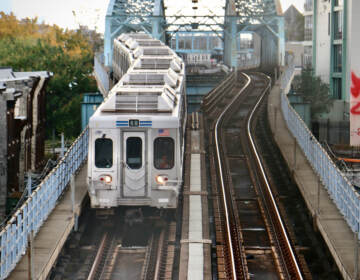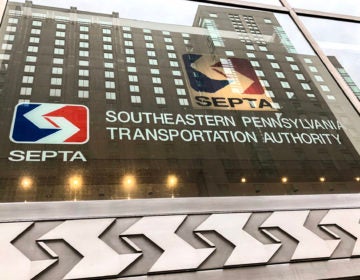Do SEPTA signs confuse you? Help is on the way
General manager Leslie Richards plans to improve the transit system’s signage and wayfinding in hopes of making it easier to navigate.

SEPTA's new General Manager Leslie Richards listens to a question from a member of SEPTA's Citizen Advisory Committee during a meeting at SEPTA Headquarters on Feb. 25, 2020. (Jonathan Wilson for WHYY)
People tend to look for signs when they feel lost. But if you’re a SEPTA rider, that might make things worse. General manager Leslie Richards says she gets it — and is working on a solution.
The former PennDOT secretary has been on the job for almost two months and has been riding the various modes of SEPTA to get around, even when it is not the most convenient, she says.
And one of the things she has noticed is it can be pretty confusing navigating through the system. Riders say they often have trouble understanding the signs, so they have to rely on the kindness of fellow travelers to get around. And that includes Richards.
“I get asked questions, too,” she said. “‘Hey, does this stop somewhere?’ Why are they asking me that? Why can’t they find out? What information do we need to give them? So that our system can be as welcoming as possible.”
During her first meeting with the authority’s Citizen Advisory Committee and Youth Advisory Council, Richards agreed with members who shared their concerns about signage and communication while using the service. Members commented on the design standards and language, sporadic announcements, and conductors too busy to help as contributing factors to the confusion riders may experience, especially those unfamiliar with the system.
Riders on Twitter, even WHYY staff, shared complaints and frustrations with SEPTA’s wayfinding, as well. One rider with a disability tweeted that trying to find their way with poor signage for ramps and elevators puts them in “physical pain” and at the mercy of others to get around.
I am disabled and have mobility issues, having to wander around trying to find where exactly a ramp or elevator is because the signs are misleading or non-existant creates more physical pain for me and often have to rely on other people to help me find where I need to go.
— above_the_fall (@abovethefall1) February 26, 2020
Riders also complained of counterintuitive use of sign space or video boards, and poor communication during detours.
New RR Video boards are 90% advertising and show less info than old signs.
— Donk (@Thecanarium) February 26, 2020
chronically lacking. sometimes only 1 or 2 signs posted for major service disruptions in busiest stations. unclear at a glance. fonts too small. detour signage even worse. LCD signs that don't post arrival times or delays, just today's date.
— a sci-fi bitch (@cyborgmemoirs) February 26, 2020
SEPTA introduced a new transit map last summer designed to simplify travel for riders. The map shows lines coded with colors and thickness to differentiate mode and frequency for subway, bus, Regional Rail, and even PATCO service.
“We really wanted to make a schedule that was intuitive, so that people know the value that these lines provide them,” Lex Powers, long-range planner for SEPTA, told PlanPhilly.
Richards says she wants to further simplify things for riders, especially inexperienced ones. A step toward that is the recent addition of a position — assistant general manager of planning. A planner by trade, Richards hired the former executive director of the Montgomery County Planning Commission, Jody Holton, for the role, which oversees SEPTA’s planning initiatives.
The hire is a return to SEPTA for Holton. She left the authority in 2013 to take the Montgomery County post. Richards was a county commissioner there at the time.
Members of both advisory groups shared other concerns, about SEPTA Key hiccups and safety. Richards implored the advisory groups, which are tasked with advocating for riders throughout the region, to keep their ideas and observations coming. She also said she plans to attend several meetings a year, with the hope of establishing a back-and-forth relationship.
Miles Taylor, a member of the Youth Advisory Council, expressed great optimism about working with the new general manager.
“I’m really excited to see a GM who is so committed to meeting up with the riders making sure improvements are happening,” said Taylor, 20. “I see SEPTA getting better in the near future.”
WHYY is your source for fact-based, in-depth journalism and information. As a nonprofit organization, we rely on financial support from readers like you. Please give today.







